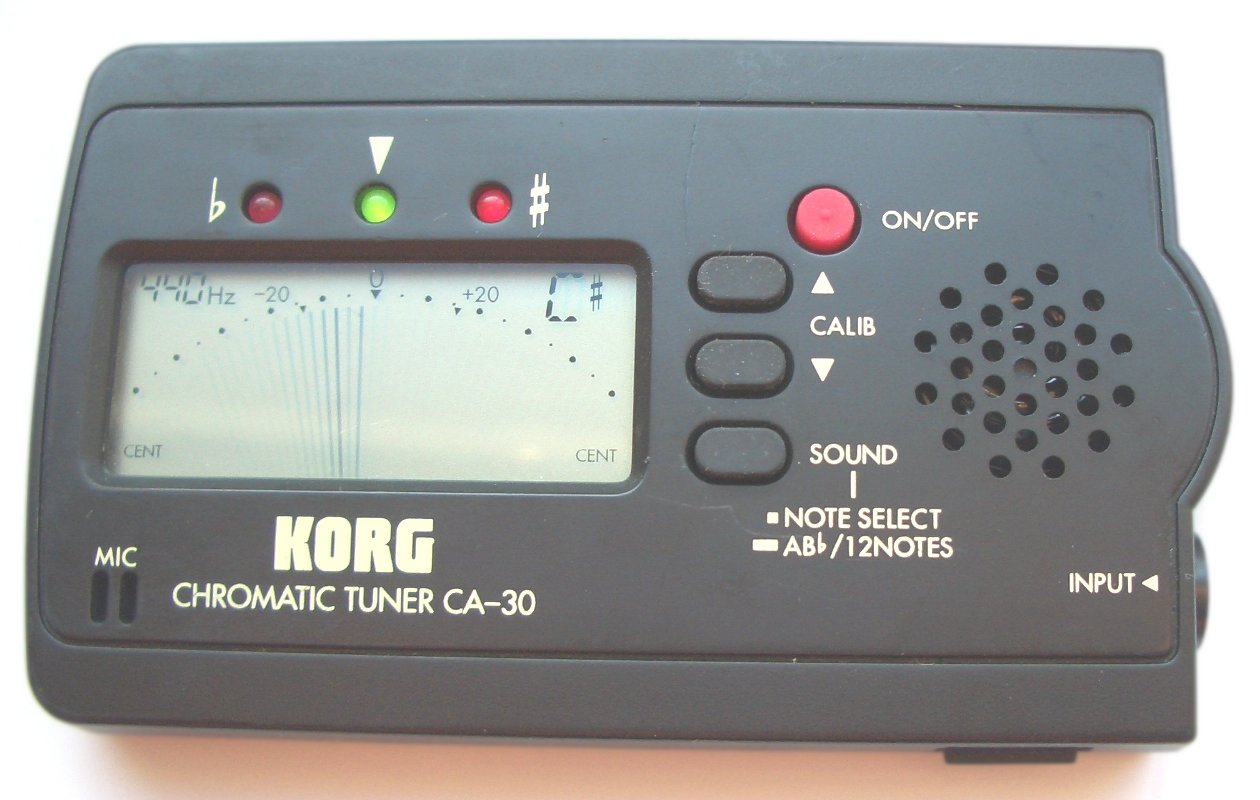Each note you play has its own basic pitch tendency. Some of these are pretty universal, e.g. C# in the staff is often sharp, D above the staff is often flat, and some of these are unique to your own playing, e.g. my low C tends to be really sharp! If you want to improve your intonation, it’s helpful to know what those basic tendencies are so you can anticipate necessary adjustments and avoid playing notes out of tune.
I recommend that you make a pitch tendency chart, recording your own individual pitch tendencies. Following is a basic exercise for using a tuner to find out what those tendencies are and get you on your way to improving your overall intonation.
First, make a chart listing every note that you practice every day, probably from C or B below the staff up to C or D two octaves above the staff, including flats/sharps. If you keep a practice journal, you can include the chart as part of that. Graph paper works well for this or you can create a chart on your computer with a program like Excel.

Then pick a note to start on! I recommend starting with a note that is comfortable and reliable so you have something consistent to refer to. Wherever you start, always play with your best tone. Everything is a tone exercise, so don’t willingly practice with a not-so-great tone! Also, good intonation is a component of good tone. When you play in tune your tone sounds better. Many of the skills you use to produce a great tone are also skills you use to play in tune.
Here’s how to get started with your chart. First tune as you normally do, on whatever note you normally use. The A above the staff is good for flutes, and commonly used when playing in orchestra or with piano. If you normally tune to F or Bb, then use that. After you get that note registering as ‘in tune’ with your tuner, you can work upward or downward to fill in your chart.

Now play that first note a half step above or below your tuning note. Play it using your best tone and without looking at the tuner. When you feel you are playing the note as well as you can, then check the tuner and see where the note is registering, whether it is flat or sharp or right on the button. On your chart, notate what the tuner indicates. You can enter in the number of Hertz that the note was high or low, you can use + or – signs, up or down arrows, or even just “sharp”, “flat”, etc. Just keep it easy to read so you can make sense of it later.
It is of the utmost importance that you play the note first and then check the pitch! If you are mainly concentrating on chasing the needle or the little lights on your tuner’s display you will never achieve the quality of tone and intonation that you want. Always work with a solid, well-centered tone.
After you have measured the first note, work your way through all the notes, notating their flatness and sharpness on your chart. Over the course of a few days of doing this, you should be able to see the general pitch tendencies of each note on your chart. After a few more days, you may even notice those tendencies changing a little bit, evening out and registering as more in tune with the tuner.
This exercise won’t fix all of your intonation problems, but it is a good first step. The goal is to give you some knowledge of your pitch tendencies, then develop your awareness of how you are producing the tone and intonation so you can adjust them at will. Eventually you will learn how to use a tuner as a tool facilitating change rather than simply being an instrument of measurement. Ultimately you want to free yourself from the tyranny of the tuner display and be capable of playing with good intonation in any situation, sans tuner, but more on that later. So make your chart, get out your tuner, and get practicing!
